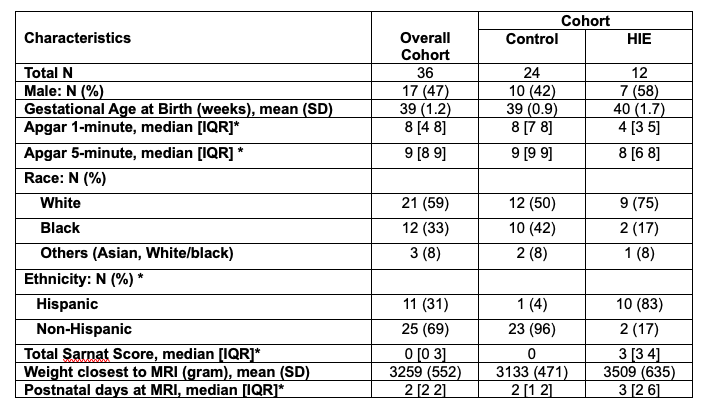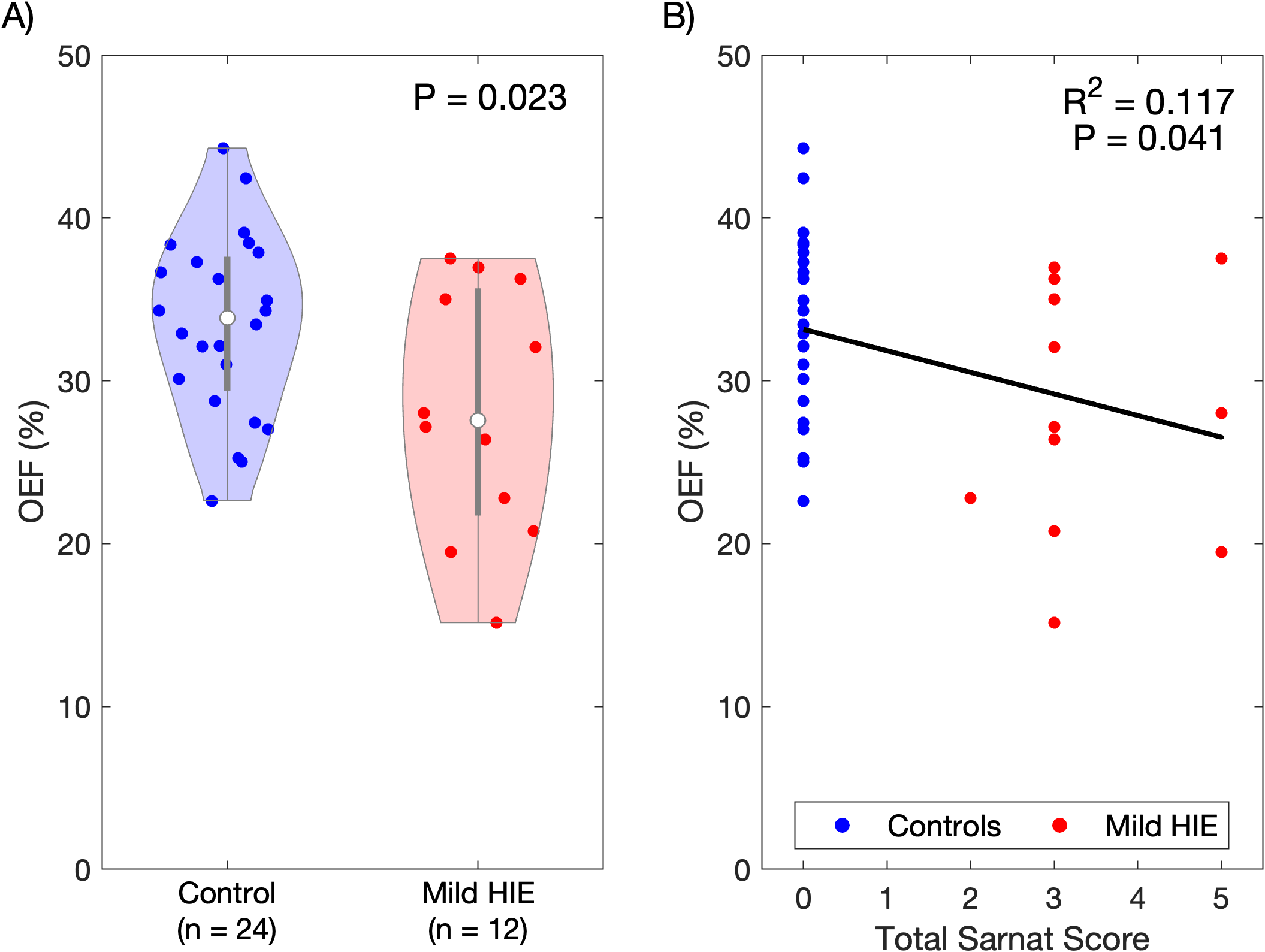Neonatal Neurology 4
Session: Neonatal Neurology 4
653 - MRI Assessment of Cerebral Oxygen Utilization in Newborns with Mild Hypoxic Ischemic Encephalopathy
Sunday, April 27, 2025
8:30am - 10:45am HST
Publication Number: 653.5627
Srinivas Kota, University of Texas Southwestern Medical School, Dallas, TX, United States; Dengrong Jiang, Johns Hopkins University, Shanghai, Shanghai, China (People's Republic); Peiying Liu, University of Maryland School of Medicine, Baltimore, MD, United States; Yu-Lun Liu, University of Texas Southwestern Medical School, Dallas, TX, United States; Lina Chalak, UTSW, Dallas, TX, United States

Srinivas Kota, PhD (he/him/his)
Assistant Professor
University of Texas Southwestern Medical School
Dallas, Texas, United States
Presenting Author(s)
Background: Hypoxic ischemic encephalopathy (HIE) is one of the leading causes of mortality and morbidity in newborns. While therapeutic hypothermia (TH) is standard clinical care for moderate and severe grades in developed countries, the management of mild HIE is controversial due to difficult clinical classification and progression of encephalopathy grade. Quantifying cerebral oxygen utilization non-invasively by MRI in newborns with mild HIE may help guide treatment and predict outcomes. Oxygen extraction fraction (OEF) is a key indicator of brain’s oxygen use and has been shown to be lower in newborns with HIE compared to healthy controls, with severe HIE cases exhibiting even lower OEF than moderate. However, the relationship between OEF and mild HIE remains unclear.
Objective: To compare OEF measured non-invasively via MRI in newborns with mild HIE and healthy controls. We hypothesize that OEF is significantly lower in newborns with mild HIE compared to healthy controls.
Design/Methods: Standardized neurological exams were conducted within the first 6 hours of life to determine the severity of HIE, and the Total Sarnat Score (TSS) was recorded. In this IRB-approved prospective cohort study, healthy newborns and newborns with mild HIE who did not receive TH as standard care were recruited. Vessel-specific OEF maps of the brain were obtained using the accelerated T2-relaxation-under-phase-contrast (aTRUPC) MRI technique (Figure 1A). OEF from each region-of-interest (ROI, Figure 1B) was quantified and we focused on cortical OEF measured from posterior sagittal sinus (ROI#3). Differences in cortical OEF between healthy controls and mild HIE were compared using the Student t-test. Univariate linear regression models were conducted to evaluate the association between TSS and OEF.
Results: 12 newborns with mild HIE and 24 healthy controls were enrolled (Table 1) in the NIH-funded study (NS102617). Hematocrit values do not differ significantly between groups. Figure 1A shows that OEF was significantly lower in newborns with mild HIE compared to healthy controls (Figure 2A). Figure 2B demonstrates a significant association between TSS and OEF, with higher TSS corresponding to a significant reduction in OEF (β = -1.325, R² = 0.117, P = 0.041).
Conclusion(s): Cortical OEF is a sensitive marker that effectively distinguishes newborns with mild HIE from healthy controls and significantly associates with TSS measured within the first 6 hours of life. OEF may serve as an early biomarker for predicting neurodevelopmental outcomes in newborns with mild HIE. Future work will include regional OEF and its association with HIE.
Table 1
 Neonatal characteristics of the healthy control and HIE cohorts
Neonatal characteristics of the healthy control and HIE cohorts Abbreviations:
SD = Standard deviation
When the normality assumption was violated, the median and interquartile range (IQR) were reported, and the Wilcoxon rank sum test was used to assess statistical significance, as appropriate.
* Indicates statistical significance (p < 0.05)
Figure 1
 A) Representative oxygen extraction fraction (OEF) maps from a healthy control and the age and gender-matched neonate with mild HIE. B) Example of the regions-of-interest (ROIs) used in OEF quantification include 1) frontal superior sagittal sinus, 2) middle sagittal sinus, 3) posterior sagittal sinus, 4) straight sinus, 5) vein of Galen, and 6) internal cerebral vein.
A) Representative oxygen extraction fraction (OEF) maps from a healthy control and the age and gender-matched neonate with mild HIE. B) Example of the regions-of-interest (ROIs) used in OEF quantification include 1) frontal superior sagittal sinus, 2) middle sagittal sinus, 3) posterior sagittal sinus, 4) straight sinus, 5) vein of Galen, and 6) internal cerebral vein.Figure 2
 Figure 2 A) Distribution of global cortical oxygen extraction fraction (OEF) for newborns with mild HIE and healthy controls, with significant differences observed (P = 0.023) using the Student t-test. B) OEF is significantly negatively correlated with Total Sarnat Score (regression coefficient = -1.325, R² = 0.117, P = 0.041). Black line indicates the linear regression fit.
Figure 2 A) Distribution of global cortical oxygen extraction fraction (OEF) for newborns with mild HIE and healthy controls, with significant differences observed (P = 0.023) using the Student t-test. B) OEF is significantly negatively correlated with Total Sarnat Score (regression coefficient = -1.325, R² = 0.117, P = 0.041). Black line indicates the linear regression fit. Table 1
 Neonatal characteristics of the healthy control and HIE cohorts
Neonatal characteristics of the healthy control and HIE cohorts Abbreviations:
SD = Standard deviation
When the normality assumption was violated, the median and interquartile range (IQR) were reported, and the Wilcoxon rank sum test was used to assess statistical significance, as appropriate.
* Indicates statistical significance (p < 0.05)
Figure 1
 A) Representative oxygen extraction fraction (OEF) maps from a healthy control and the age and gender-matched neonate with mild HIE. B) Example of the regions-of-interest (ROIs) used in OEF quantification include 1) frontal superior sagittal sinus, 2) middle sagittal sinus, 3) posterior sagittal sinus, 4) straight sinus, 5) vein of Galen, and 6) internal cerebral vein.
A) Representative oxygen extraction fraction (OEF) maps from a healthy control and the age and gender-matched neonate with mild HIE. B) Example of the regions-of-interest (ROIs) used in OEF quantification include 1) frontal superior sagittal sinus, 2) middle sagittal sinus, 3) posterior sagittal sinus, 4) straight sinus, 5) vein of Galen, and 6) internal cerebral vein.Figure 2
 Figure 2 A) Distribution of global cortical oxygen extraction fraction (OEF) for newborns with mild HIE and healthy controls, with significant differences observed (P = 0.023) using the Student t-test. B) OEF is significantly negatively correlated with Total Sarnat Score (regression coefficient = -1.325, R² = 0.117, P = 0.041). Black line indicates the linear regression fit.
Figure 2 A) Distribution of global cortical oxygen extraction fraction (OEF) for newborns with mild HIE and healthy controls, with significant differences observed (P = 0.023) using the Student t-test. B) OEF is significantly negatively correlated with Total Sarnat Score (regression coefficient = -1.325, R² = 0.117, P = 0.041). Black line indicates the linear regression fit. 
